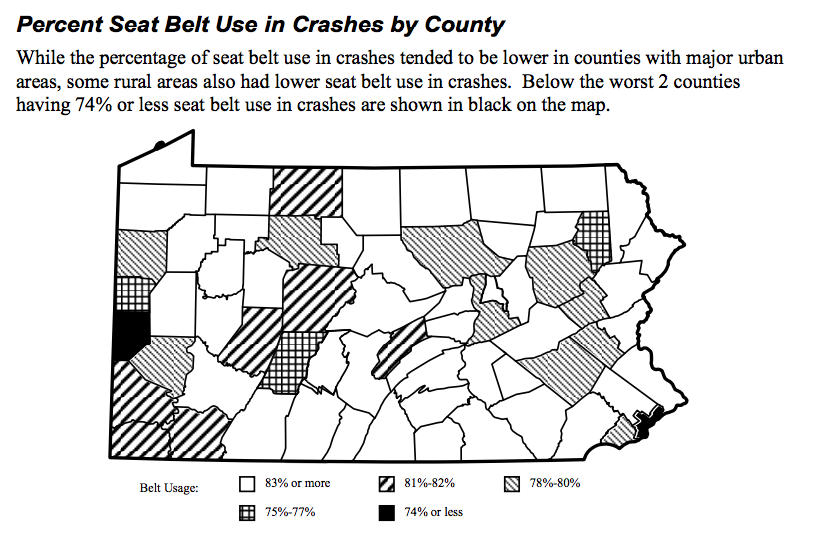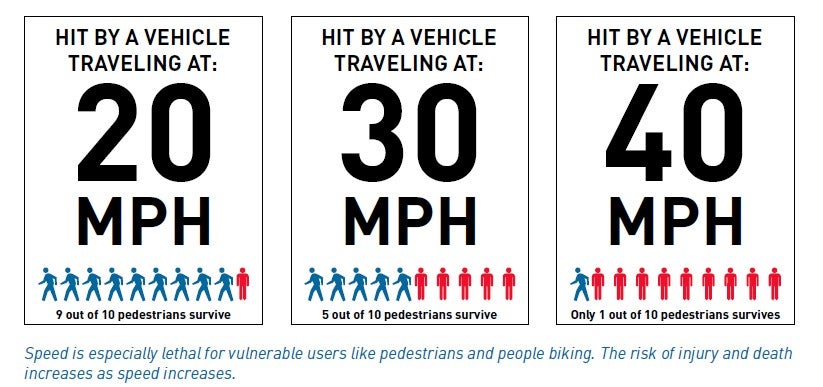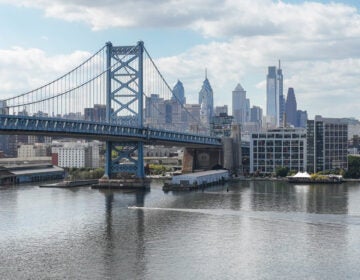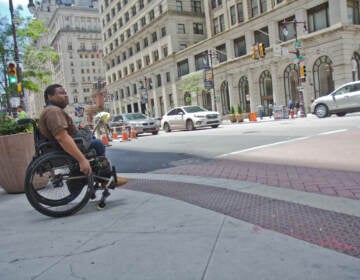Broad coalition forms Vision Zero Alliance to push Kenney on street safety [updated]

Philadelphia should be number one in a race to number zero, says a newly formed coalition of runners, cyclists, motorists, health care providers, business leaders and environmentalists advocating for the implementation of a Vision Zero policy in Philadelphia.
The aptly-named Vision Zero Alliance announced its formation Wednesday and immediately called on Mayor Jim Kenney to live up to his campaign promise to create a task force to develop a plan to completely eliminate crash deaths in Philadelphia.
In an announcement, the Vision Zero Alliance said they would advocate for “safer streets through new design, automated enforcement, education, and targeted goals.” The Alliance consists of an unusually broad mix of organizations: Bicycle Coalition of Greater Philadelphia, AAA-Mid Atlantic, the African-American Chamber of Commerce, 5th Square, the Clean Air Council, Run 215, Jefferson Hospitals, Public Health Management Corporation, and Parsons Brinckerhoff.
Vision Zero is policy shorthand for the idea that traffic crashes are not accidents, but instead are the sadly predictable consequences of dangerous traffic policies and street designs. Vision Zero calls for a suite of policy shifts to make walking, biking and driving safer, like increased traffic law enforcement, slower traffic speeds on busier streets, and more protected bicycle lanes.
The concept comes from Sweden, where traffic fatalities have fallen 30 percent since the policy’s adoption in 1997. While Vision Zero sets a dramatic goal of absolutely no traffic deaths, in practice the goal is to significantly reduce both the number and severity of car crashes over time.
Still, before Vision Zero policies can begin to reduce the number of injuries and fatalities in a city like Philadelphia, which has averaged 11,105 crashes and 95 traffic fatalities a year since 2011, they need to be implemented. So far, the Kenney Administration has done little more than follow through on safety initiatives started under his predecessor, Michael Nutter. That has the Vision Zero Alliance members frustrated.
“They haven’t done anything yet,” said Randy LoBasso, spokesman for the Bicycle Coalition of Greater Philadelphia. “Mayor Jim Kenney promised a Vision Zero strategy when running for office, he talked about it in first address to [City] Council, and we want to see that happen now.”
One of the easiest ways to reduce vehicular crashes is to reduce driving. With an improving economy and low gas prices, Americans returned to the road in large numbers in 2015. Vehicle Miles Traveled (VMT) increased by 3.5 percent over 2014, the largest jump in over 20 years. Last year 35,092 people were killed on U.S. roads, a 7.2 percent jump from 2014. To that end, Vision Zero advocates for improved bicycle infrastructure to encourage more, and safer, cycling.
Another potential life saver: seat belts. According to PennDOT data, Philadelphia ranks dead last in seat belt use: seat belts were being used in just 41 percent of crashes in Philadelphia last year, compared to 80 percent statewide. The only other county in Pennsylvania with a seat belt usage rate below 75 percent was Beaver County, at 72 percent.

Vehicle speed may play the largest role in both the number and severity of car crashes. The faster a car goes, the less time a driver has to react to crash-causing situations. Simple Newtonian physics tells us that the higher speeds mean exponentially more powerful impacts. The likelihood of a pedestrian dying from being hit by a vehicle similarly increases exponentially as speeds go up.
Contacted late Wednesday afternoon about renewed calls for Vision Zero in Philadelphia, the Kenney Administration did not provide an official response.
UPDATE: Through a spokesman, OTIS Managing Director Clarena Tolson emailed the following response Thursday afternoon:
The City of Philadelphia looks forward to working with a wide group of stakeholders over the coming years to improve the safety of our city’s roadways and public spaces. Within the next month we expect to announce the appointment of a Director of Complete Streets and an Executive Order to establish a Vision Zero Task Force. Though the name Vision Zero will be a new brand for its safety initiatives, the Office of Transportation and Infrastructure Systems (oTIS) has continued to work closely with the Streets Department, PennDOT, SEPTA, Police and other key stakeholders though the first 8 months of the Kenney administration to build on the traffic safety programs begun under Mayor Nutter.
Since January the City has implemented numerous projects with the goal of improving safety for all road users, particularly pedestrians, cyclists, children and the elderly who are among the most vulnerable. The Kenney administration has overseen projects that improve visibility and communication between drivers and other road users such as the installation of improved lighting at critical intersections and the addition of fiber optic cable along Roosevelt Boulevard to better coordinate traffic signals. Our team has implemented traffic calming and pedestrian safety measures such as raised mid-block crossings at 17th and Arch, and Cardinal Avenue in addition to the installation of speed cushions, signage and markings along 5th Street in Northern Liberties. Later this year the intersection of Broad and Chestnut will be reconstructed as a raised intersection to calm traffic and create a more comfortable crossing for pedestrians. In addition to the dedication of funding for a Complete Streets office within oTIS, the City has also reprogrammed funding within the Streets Department’s Traffic Division to increase its capacity to deliver projects. In the Right of Way Division, the City has added staff to help manage safety around work zone and construction sites.
Traffic safety has always been important to the City of Philadelphia and we are constantly seeking ways to improve it. This includes the search for additional funding and resources. This year alone, oTIS has coordinated over $15 million in grant applications to state, federal and foundation sources. To date we have received funding for an expanded Safe Routes to School program, a protected bike lane network, an enhanced rapid transit program with SEPTA along Roosevelt Boulevard, a complete streets retrofit along N. 5th Street in Hunting Park and funding for a planning project to address sidewalk repairs and hazards across the city.
Philadelphia’s success in the realm of traffic safety will be measured on lives saved rather than efforts made or taglines adopted. Continuity of critical traffic safety programs developed over the course of years and administrations makes sense, and makes a difference. We believe that any fatality number more than zero is too many, but we also believe that we are on the right track. oTIS looks forward to the additional focus that the City’s Vision Zero program will bring to this important work, and the energy that a broad coalition of partners will bring to the table.

WHYY is your source for fact-based, in-depth journalism and information. As a nonprofit organization, we rely on financial support from readers like you. Please give today.






